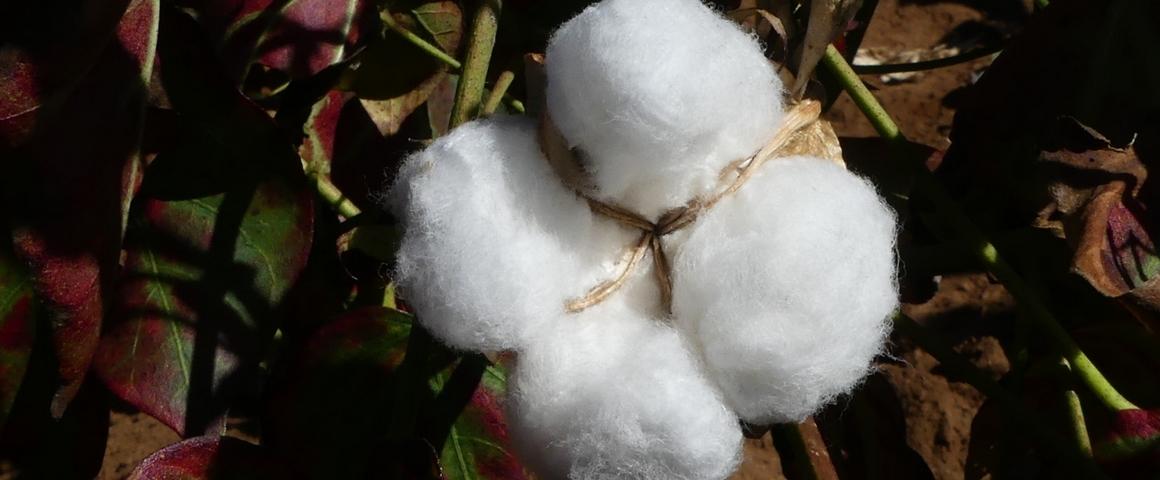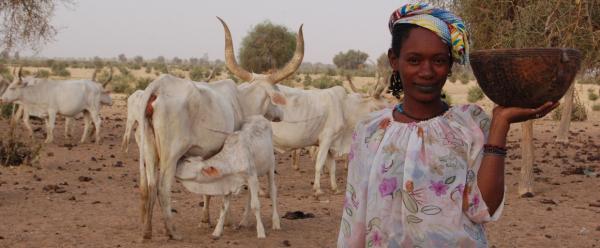Event 9 December 2025
- Home
- CIRAD news
- News
- The future for cotton
Agronomists, historians, economists and sociologists are discussing what the future holds for textiles

Ripe cotton boll on a farm in Madagascar © B. Bachelier, CIRAD
"The idea behind this meeting was to go back and forth between the two ends of the textile chain, from cotton field to recycled clothing, through every stage in-between. We wanted to look at how our actions at various points can have wider consequences, and see how much room for manoeuvre we have."
Bruno Bachelier is an agronomist and cotton value chain correspondent at CIRAD. In taking part in the meetings, organized on the initiative of Max Havelaar France, he was hoping to help transform the textile sector. "Cotton is not the only textile, and not all cotton is used for textiles", he points out. However, a major share of the cotton grown worldwide is used to make fabric, with cotton fibres systematically mixed either with cottons of different geographical origins or with other fibres, whether natural, synthetic or artificial.
The textile sector currently accounts for around 4% of global greenhouse gas emissions. Above and beyond such environmental issues, it regularly comes under attack for social and health reasons: low farmer incomes, dubious industrial practices, appalling working conditions in factories, toxicity of certain pesticides or dyes, etc. Between Fashion Revolution Week and the European Parliament's talks on corporate due diligence regulations, 2023 is set to be a year of change for the cotton sector. What if "sustainability" were to become the latest watchword?
In any event, that was the target set by Max Havelaar France for its scientific meetings organized in late May. The NGO is already promoting a fair-trade label for a whole range of products for which the raw materials are produced in tropical and Mediterranean countries. One of those materials is cotton.
Since it was founded, Max Havelaar France has included a range of stakeholders who either support or conduct scientific work. "It is part of the movement's DNA, with the Fairness association, which brings together researchers to work on issues relating to fair trade", said the NGO Director General Blaise Desbordes in his opening speech. To achieve our ambition of building a world in which trade models satisfy ethical and responsibility principles and production and consumption practices contribute to sustainable development, "we have to measure the changes induced, which is why it is vital we talk to researchers".
To remain a learning movement and obtain proof of its impact, MHF is keen to build multidisciplinary visions of its action, help disseminate knowledge and keep in constant contact with experts on the subjects it is working on, such as CIRAD.
The end of scientific research disconnected from societal issues
Using service plants to reduce input use, providing permanent soil cover to preserve biodiversity, managing water better, using biopesticides or biofertilizers, and so on… many sustainable, often agroecological farming practices are already used on cotton farms. While CIRAD is continuing to support producers looking to make their cropping systems more resilient, one thing has become clear over the years: greater sustainability will not only, and maybe not primarily, be achieved in the field.
To give just one example, the complexity and opacity of the textile sector hamper the traceability of cotton, hence fair wages for farmers who adopt environmentally friendly practices. According to the 2022 Fashion Revolution Transparency Index, in a study of 250 major fashion brands and retailers worldwide, 50% of major brands do not release any information about their supply chains. Some 85% do not publish the volume of clothes produced annually, in spite of overproduction and waste. Only 11% of brands publish analysis results for the waste water produced by their suppliers, despite the fact that the textile industry is well known for the amount of water pollution it generates.
Bruno Bachelier is also critical of the "boomerang effect" of sending second-hand clothes back from Europe to several African countries that export raw cotton. "The added value of the clothes produced bypasses Africa. Not only is the cotton exported as bales of raw fibre worth less than cotton thread or fabric, it is then returned to producing countries as waste." The researcher reiterates that for a t-shirt made from African cotton, production and ginning of that cotton account for just 2% of its market value, compared to 55% for design, manufacture, packaging, marketing and sales operations.
Scientific disciplines agree on the need for "sustainability"
Despite having different visions, the panel agreed on a shared objective: "sustainability", with its social, economic and environmental components. "Sustainability is what allows us to consider working conditions at the same time as the environment and the economic viability of operations, within a complex, fragmented and opaque textile sector" says Bruno Bachelier.
Agronomy, economics, history, sociology, etc... the links between scientific disciplines can be used to paint a clear picture of the issues surrounding a value chain and put humans back in their rightful place. In short, the participants in this event agreed on one thing in particular: to reduce the sector's environmental impact, we need to set a fair price and minimum income
At the end of these first meetings, the participants were unanimous in saying that it is vital to continue talking about cotton and extending discussions to cover other sectors such as coffee, cocoa or banana. When will the next Max Havelaar France scientific meetings be?



























